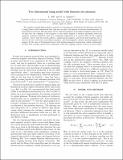Files in this item
Two-dimensional Ising model with Einstein site phonons
Item metadata
| dc.contributor.author | Pili, L. | |
| dc.contributor.author | Grigera, S. A. | |
| dc.date.accessioned | 2019-05-21T16:30:01Z | |
| dc.date.available | 2019-05-21T16:30:01Z | |
| dc.date.issued | 2019-04-23 | |
| dc.identifier | 258980008 | |
| dc.identifier | 4003d64f-7844-454f-a579-2edc2d2004d1 | |
| dc.identifier | 85065146814 | |
| dc.identifier | 000466385900004 | |
| dc.identifier.citation | Pili , L & Grigera , S A 2019 , ' Two-dimensional Ising model with Einstein site phonons ' , Physical Review B , vol. 99 , no. 14 , 144421 . https://doi.org/10.1103/PhysRevB.99.144421 | en |
| dc.identifier.issn | 1098-0121 | |
| dc.identifier.other | RIS: urn:C61525B67B9DC69509B5C98B70B8011E | |
| dc.identifier.other | RIS: 10.1103/PhysRevB.99.144421 | |
| dc.identifier.uri | https://hdl.handle.net/10023/17735 | |
| dc.description | This work was supported by CONICET (Argentina), and ANPCYT (Argentina) via Grant PICT-2013-2004. | en |
| dc.description.abstract | We consider a simple Ising magnetic model in two dimensions with Einstein site phonons and study it using Monte Carlo simulations that take into account both degrees of freedom simultaneously. In nonfrustrated systems, like the square lattice with ferromagnetic and antiferromagnetic interactions, we find that the coupling of the magnetic to the elastic degrees of freedom gradually lowers the magnetic ordering transition until it is completely suppressed at a critical value of the coupling constant. Above this the system suffers a simultaneous magnetic and structural transition into a dimerized state with lower crystalline symmetry and ferromagnetic clusters antiferromagnetically aligned. In the case of the Kagomé lattice with antiferromagnetic interactions, which is frustrated, we show that a similar ordered state takes place when the coupling constant is above a critical value. | |
| dc.format.extent | 7277036 | |
| dc.language.iso | eng | |
| dc.relation.ispartof | Physical Review B | en |
| dc.subject | QC Physics | en |
| dc.subject | NDAS | en |
| dc.subject.lcc | QC | en |
| dc.title | Two-dimensional Ising model with Einstein site phonons | en |
| dc.type | Journal article | en |
| dc.contributor.institution | University of St Andrews. School of Physics and Astronomy | en |
| dc.contributor.institution | University of St Andrews. Condensed Matter Physics | en |
| dc.identifier.doi | 10.1103/PhysRevB.99.144421 | |
| dc.description.status | Peer reviewed | en |
This item appears in the following Collection(s)
Items in the St Andrews Research Repository are protected by copyright, with all rights reserved, unless otherwise indicated.

